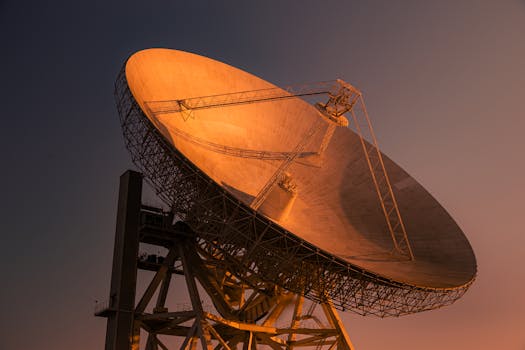
From Ground to Sky: The Evolution of Satellite Telecommunications Technology
Satellite Telecommunications has come a long way since the launch of the first artificial satellite, Sputnik, in 1957. The evolution of satellite telecommunications technology has transformed the way we communicate, from humble beginnings to a global network of interconnected satellites. In this article, we will explore the history and development of satellite telecommunications technology, its current state, and future prospects.
Early Years of Satellite Telecommunications
The concept of satellite telecommunications dates back to the 1940s, when scientists like Arthur C. Clarke and John R. Pierce proposed the idea of using satellites for communication purposes. The first commercial satellite, Intelsat 1, was launched in 1965, marking the beginning of the satellite telecommunications era. The early years of satellite telecommunications were marked by limited capacity, high costs, and restricted coverage. However, as technology improved, satellites became more efficient, and their capabilities expanded.
Advances in Satellite Telecommunications Technology
The 1980s saw significant advances in satellite telecommunications technology, with the introduction of new satellite systems like Intelsat 5 and Inmarsat. These systems offered improved capacity, lower costs, and greater coverage. The 1990s witnessed the launch of satellite constellations like Iridium and Globalstar, which provided global coverage and enabled mobile communications. The development of new technologies like satellite-based internet services and broadband connectivity further expanded the scope of satellite telecommunications.
Current State of Satellite Telecommunications
Today, satellite telecommunications play a vital role in global communication systems. Satellites are used for a wide range of applications, including telecommunications, navigation, weather forecasting, and Earth observation. The launch of high-throughput satellites (HTS) has enabled faster and more efficient data transmission, while the development of small satellites and satellite constellations has made satellite technology more accessible and affordable. The use of satellite telecommunications has also expanded to include new services like satellite-based IoT connectivity and 5G networks.
Future Prospects of Satellite Telecommunications
The future of satellite telecommunications looks promising, with ongoing research and development focused on improving the efficiency, capacity, and sustainability of satellite systems. The launch of new satellite constellations like OneWeb and Amazon Kuiper Systems is expected to provide global coverage and enable new services like satellite-based 5G networks. The development of advanced technologies like quantum communications and artificial intelligence is also expected to enhance the capabilities of satellite telecommunications. As the demand for global connectivity continues to grow, satellite telecommunications will play an increasingly important role in meeting this demand and enabling new services and applications.




